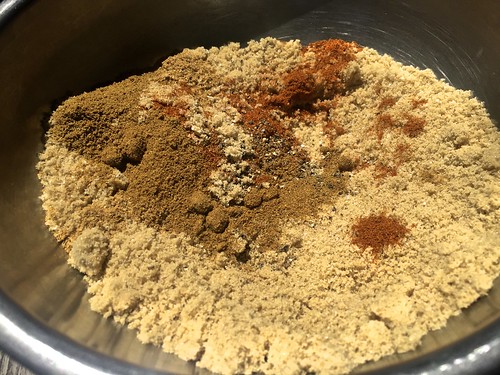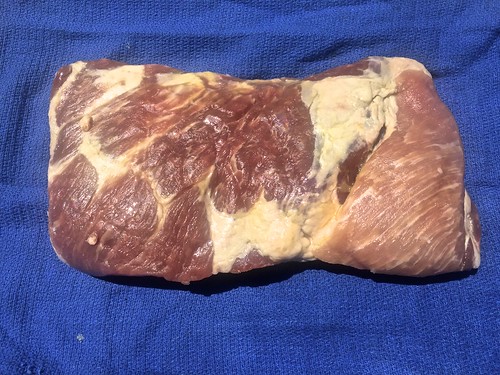
Watermelon Surprise, watermelon ice cubes in a vodka cocktail. Credit: Copyright 2016 David Latt
You love summer but not when it is uncomfortably hot. For relief, you could jump into the pool. Or, you could cut a thick slice of watermelon and let the sweet juices cool you down. Even better, you could fill a tall glass with a watermelon cocktail made with watermelon ice cubes and straight-from-the-freezer vodka and settle into the chaise lounge. You stir the ice cubes. Bits of watermelon juice break free. The crystal clear vodka turns pink. You sip, stir and eat a watermelon ice cube and suddenly you are not overheated any longer. Now, you are cool and happy.
The non-alcoholic version is as delicious. Fill a tall glass with watermelon ice cubes and pour in freshly made lemonade. Stir and enjoy.
The non-alcoholic version is as delicious. Fill a tall glass with watermelon ice cubes and pour in freshly made lemonade. Stir and enjoy.
Summertime and the livin’ is easy
Summer is good for watermelon. They grow quickly in the heat of the sun, producing fat, heavy fruit loaded with sweetness.
At the farmers market I was always told to use a hand to thump on the melon. When the sound was deep and resonant, the melon was ripe, ready to eat. If there is a farmer you frequent at your neighborhood market, ask for advice about a good melon that’s ready to eat.
Prices for watermelon vary greatly. At Asian and Latin markets, watermelon can sell for as little as 10 cents a pound. At upscale supermarkets and farmers markets, the prices can be significantly higher.
A melon is delicious at room temperature or ice cold. I like to chill the melon overnight in the refrigerator. Of course, the easiest way to eat watermelon is to use a sharp knife to cut out a thick slice.
But when I was in Zurich recently I met Olivier Rais, a talented chef who runs the bistro Rive Gauche in the iconic hotel Baur au Lac across the street from Lake Geneva. He had just returned from working with Tal Ronnen, the celebrated chef who created Crossroads Kitchen, an upscale Los Angeles restaurant devoted to vegan cuisine.
Rais made several vegan dishes for me to taste, one of which was a watermelon-gazpacho served in a glass.
I love watermelon but had never thought of extracting the juice. When I replicated his gazpacho at home, I had watermelon juice left over. Deciding to experiment, I reduced the juice in a sauce pan over a low flame. Once the juice cooled, I poured it into a mini-ice cube tray.


Watermelon ice cubes in an ice cube tray. Credit: Copyright 2016 David Latt
That night I added the ice cubes to vodka that we keep in the freezer. I dropped in an espresso spoon, settled into a chair and stirred my drink. After a few sips, I realized that I had stumbled onto an easy-to-make, deliciously refreshing cocktail. Summer’s perfect drink.
Serve the cocktail with an espresso or small spoon. One of the pleasures of the drink is stirring the ice cubes. As the ice cubes melt, the watermelon juice infuses the vodka. The mellow sweetness takes the edge off the vodka.
As you stir, the ice cubes crater and reduce by half. Use the spoon to scoop up the icy bits. In an effervescent moment, the softened ice cubes dissolve like pop rocks in your mouth.
Watermelon Surprise
Use any size plastic ice cube tray. The mini-trays that make 1” square ice cubes work well because the ice cubes melt easily. Use only unflavored premium vodka, and for non-alcoholic drinks, add the ice cubes to glasses of carbonated water or lemonade.
Prep time: 30 minutes
Freezer time: 1 hour or overnight depending on the temperature of the freezer
Total time: 1 hour 30 minutes or overnight and 30 minutes
Yield: 4 servings
Ingredients
1 (3-pound) watermelon, washed
8 ounces unflavored premium vodka
Directions
1. Place the vodka bottle in the freezer the night before serving.
2. Using a sharp knife, remove the rind from the watermelon. Discard.
3. Cut the melon into chunks, removing any seeds.
4. Place a food mill or a fine mesh strainer over a non-reactive bowl.
5. Press the watermelon chunks through the food mill or strainer, capturing all the juice in the bowl. Discard any pulp and seeds.
6. Pour the juice into a sauce pan over low heat. Reduce volume by 30%. Remove from stove. Allow to cool.
7. Pour the reduced juice into the ice cube tray.
8. Place into freezer.
9. Just before serving, pour 1½ ounces ice cold vodka into each glass. Place 5 to 6 ice cubes into each glass.
10. Serve with an espresso or small spoon.
Main photo: Watermelon Surprise, watermelon ice cubes in a vodka cocktail. Credit: Copyright 2016 David Latt
































